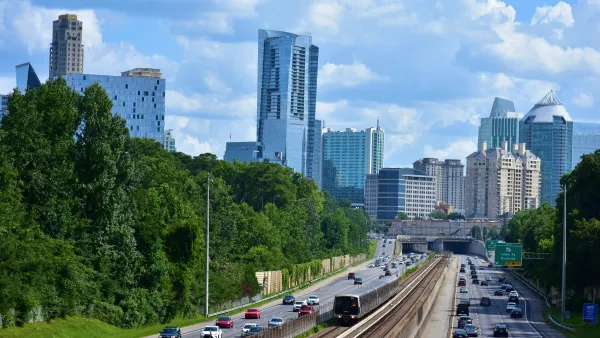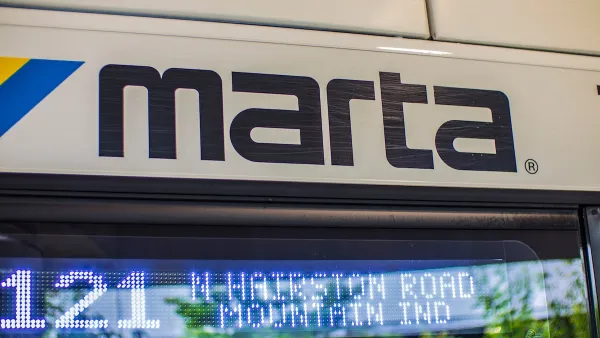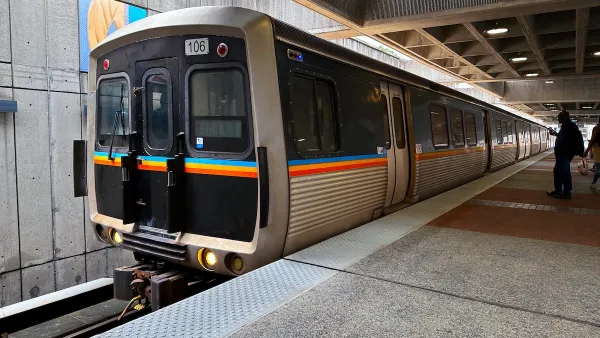Cities like Atlanta, that have grown up in the age of the automobile and air conditioning, are making efforts to green their environmentally unfriendly buildings and spaces, explains Emily Badger.
Badger points to the dual curses of the car and the air conditioner, as causing Southern cities to evolve into places with congested and sprawling interstates and centralized air enclosed buildings with small windows and no natural air flow.
"It's the difference between a city that has grown up in the automobile age and a city that has grown up before the automobile age," says Paula Vaughan, the co-director in Atlanta of the Sustainable Design Initiative at the architecture firm Perkins+Will. Older cities are inherently compact and walkable (and further on their way to sustainability) because no one was driving anywhere when they were built.
Atlanta and its younger Southern counterparts are looking to change their unsustainable ways, however. "The downtown business district has launched a Better Buildings Challenge in which property owners are pledging to reduce their energy and water consumption by 20 percent by 2020." And as of this spring, "Midtown now has a 'greenprint' – a kind of sustainability blueprint that civic leaders hope will lead the neighborhood to become the 'South's first eco-district' (following a model of existing neighborhood-scale plans in Portland and Seattle)." The proposal lays out inclusion of higher-performance buildings, more green spaces and better-connected streets with Zipcar stations and walkable sidewalks.
According to Badger, the city has already made steps to rebuild their urban form and have retrofitted numerous buildings for energy efficiency, but the Big Peach still a ways to go. "People still have that notion of sitting in the highway in your car in the 90-degree heat to get to work," Vaughan says. "We're really changing that. I think it's going to take a while before people in other cities start recognizing that. But yeah, word is getting out."
FULL STORY: How to Green Southern Cities Built in the Age of Cars and Air Conditioning

National Parks Layoffs Will Cause Communities to Lose Billions
Thousands of essential park workers were laid off this week, just before the busy spring break season.

Retro-silient?: America’s First “Eco-burb,” The Woodlands Turns 50
A master-planned community north of Houston offers lessons on green infrastructure and resilient design, but falls short of its founder’s lofty affordability and walkability goals.

Delivering for America Plan Will Downgrade Mail Service in at Least 49.5 Percent of Zip Codes
Republican and Democrat lawmakers criticize the plan for its disproportionate negative impact on rural communities.

Test News Post 1
This is a summary

Test News Headline 46
Test for the image on the front page.

Balancing Bombs and Butterflies: How the National Guard Protects a Rare Species
The National Guard at Fort Indiantown Gap uses GIS technology and land management strategies to balance military training with conservation efforts, ensuring the survival of the rare eastern regal fritillary butterfly.
Urban Design for Planners 1: Software Tools
This six-course series explores essential urban design concepts using open source software and equips planners with the tools they need to participate fully in the urban design process.
Planning for Universal Design
Learn the tools for implementing Universal Design in planning regulations.
EMC Planning Group, Inc.
Planetizen
Planetizen
Mpact (formerly Rail~Volution)
Great Falls Development Authority, Inc.
HUDs Office of Policy Development and Research
NYU Wagner Graduate School of Public Service





























